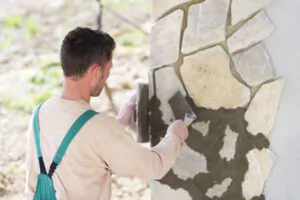
When thinking about stone masonry, one of the first things that come to mind is its most notable feature – strength and durability. But most of us don’t know that there are different types of stone masonry you can choose to build. Each of these masonry styles can make your concrete project look much better than if you had used another building material.
What is Stone Masonry?
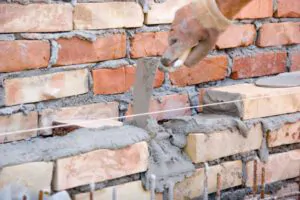
Stone masonry is the building of a structure out of stones that are joined together with mortar. It generally involves cutting, shaping, and assembling stones to create buildings and patterns. Masonry contractors use them with mortar to build walls, floors, columns, and foundations.
What are some types of stone masonry?
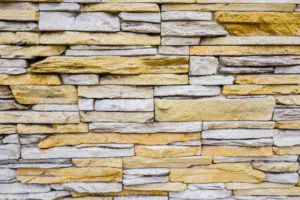
Stone masonry can be divided into two main groups: rubble and ashlar. Let’s look at each specific type so you can make smart choices when planning your next project.
Rubble masonry
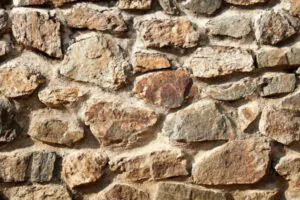
Stone rubble masonry utilizes stones that come straight from the quarry, requiring very little or no preparation. It’s a type of stonework that uses different shapes and sizes of stones. When the stones are brought from the quarry, they are used or broken with a hammer until they’re the right size. The style looks great in rustic houses and buildings. So, if you love old-fashioned designs and styles of buildings, stone rubble masonry is your best choice.
These are three subtypes of rubble masonry:
1. Random Rubble Masonry
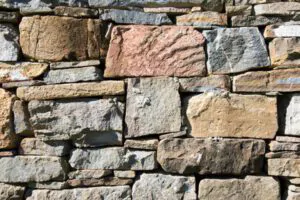
Random stone rubble masonry can be done with either un-dressed stone (masonry stones that haven’t been shaped and processed) or hammer-dressed stone (a masonry stone that has been given a rough shape simply by hammering it). A random rubble stone should be at least 225 mm (9 inches) thick and 300 mm (1 foot). The stones are carefully chosen and placed so that the joints are neat and tight and there aren’t any long vertical joints.
2. Coursed Rubble Masonry of The First Sort
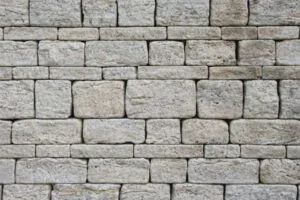
In this work, the stones are hammered on all the beds and joints to look like roughly rectangular blocks. All the stones are of the same height, and the height of every course is the same. Ideally, mortar joints should not be more than 10 mm. All joints and beds of this type of stone rubble masonry should be squared, and the bed joints should be rough-chiseled for at least 80 mm back from the face.
3. Coursed Rubble Masonry of The Second Sort
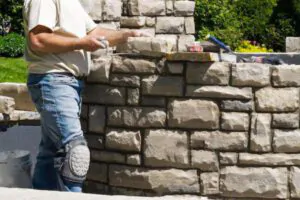
It’s not as good as the first type of coursed rubble masonry, but it will look the same. No part of the worked surface should be more than 10 mm from a straight edge. This type of stonework uses stones of varying sizes and heights, and only two stones with 12 mm mortar joints are used to measure the height of the course. The cost is higher than random rubble work but lower than course rubble work. This stonework is excellent for building fences, garden sheds, and other similar buildings.
Ashlar Masonry
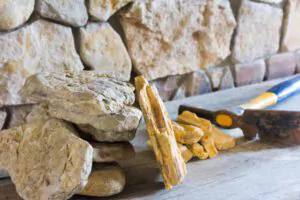
Ashlar Masonry uses polished stones that are set in place with mortar or cement. The stones are already cut and polished to have a certain height and surface size, which gives you the freedom to control the size and location of the horizontal and vertical joints of the construction. When done correctly, ashlar work is solid and beautiful but also very expensive.
Below you will find some subtypes of Ashlar masonry.
1. Rough-Tooled Ashlars
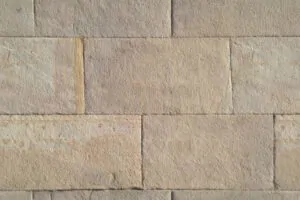
The stones’ sides are cut to a specific shape and angle in a rough-tooled ashlar. Despite this, the stones are left rough and only slightly shaped and polished with a hammer or chisel. This gives the wall’s exterior a rough appearance. It is strong and easy to build because the stones are already cut and shaped to fit together better.
2. Quarry-Faced or Rock-Faced Ashlars
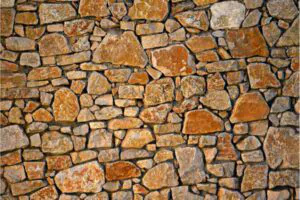
In contrast to rough-tooled ashlar masonry, the faces of quarry-faced ashlar stone are entirely uncut. As a result, the stonework looks rougher on the outside, giving it a more natural appearance. The outside of the stone is chiseled with a 25mm wide strip. The middle part of the stone surface is left the same as it was when taken from the stone quarry, while the sides of the stones are finely dressed to create specific shapes.
3. Chamfered Ashlars
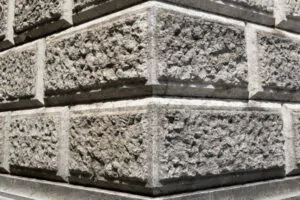
Chamfered ashlar is among the most elegant types of stonework. The faces are polished to make the texture more even, and a small bevel is added around each stone. With this stone masonry type, you can produce elegant, traditional brickworks that go well with any house design. Stones are carefully cut into blocks of the same size.
Ready For Your Next Stone Masonry Project?
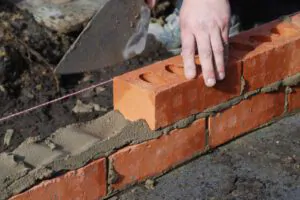
Do you want to add a rubble wall to your backyard patio? Or perhaps you’d like to add ashlar masonry to the front of your house? Our experienced stone masonry contractors in South Shore, MA, can help you with any masonry construction or restoration project. Call us today at 617-944-5565, so we can assist you further!





